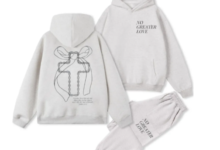Step-By-Step Guide to Video Commerce Marketing

Video Commerce is one of the fastest-growing trends in digital marketing, helping businesses transform ordinary product pages into dynamic, shoppable experiences. Instead of relying on static images and plain text, Video Commerce allows brands to showcase products in action, add interactive elements, and create personalized shopping journeys that increase conversions. If you’re ready to get started, this step-by-step guide to Video Commerce marketing will walk you through everything you need to know.
One of the most effective tools for launching your Video Commerce strategy is Reelup, a platform that integrates seamlessly with Shopify. Reelup enables you to create shoppable videos, which helps your brand to go with latest video shopping trends, it also hosts live shopping sessions, and tracks performance with built-in analytics. By connecting your product catalog to Reelup, you can turn video content into a direct sales engine, enhanced with voice generator AI, that works across your website and social media channels.
Along the way, we’ll highlight best practices, practical tips, and common mistakes to avoid so you can maximize the impact of your efforts. By the end of this guide, you’ll have a clear roadmap for implementing Video Commerce marketing and driving measurable growth for your business.
Step 1: Define Your Goals
Before diving into video creation, it’s important to clarify your objectives. Are you looking to increase sales conversions, boost customer engagement, or raise brand awareness? Your goals will shape the type of video commerce strategy you develop.
- Sales goals: Focus on shoppable product demos and tutorials.
- Engagement goals: Create behind-the-scenes videos or customer stories.
- Awareness goals: Leverage social media integrations to expand reach.
Defining clear objectives ensures that every piece of content has a purpose and measurable outcome.
Step 2: Choose the Right Platform
Selecting the right platform is critical to your success. While platforms like Firework, Bambuser, and Smartzer have their own strengths, Reelup is particularly effective for small to mid-sized businesses using Shopify.
Why Choose Reelup?
- Seamless Shopify integration for fast setup.
- Shoppable video capabilities with product tagging.
- Live shopping sessions with real-time interaction.
- Analytics dashboard to monitor performance.
The best platform will depend on your e-commerce setup, budget, and desired level of interactivity.
Step 3: Create Engaging Shoppable Videos
Once your platform is set up, the next step is creating content. Here are some best practices:
Types of Video Content to Try
- Product demonstrations: Show how your product works.
- Tutorials: Educate your audience while selling.
- Customer testimonials: Build trust with authentic stories.
- Lifestyle videos: Show your product in real-life situations.
Best Practices
- Keep videos short and focused (30–90 seconds).
- Use clear visuals and high-quality audio.
- Include captions for accessibility.
- Add calls-to-action (CTAs) like “Shop Now” or “Buy Here.”
Remember: the goal is not just to entertain but to convert viewers into buyers.
Step 4: Optimize Your Videos for Conversion
Creating videos is only half the job. Optimizing them ensures they actually drive sales.
- Placement matters: Add videos to product detail pages, landing pages, and homepages.
- SEO optimization: Use relevant keywords in video titles, descriptions, and alt tags.
- Interactive elements: Include clickable tags and product hotspots.
- A/B testing: Experiment with different CTAs, thumbnails, and video lengths.
Optimized videos can significantly boost both engagement and sales.
Step 5: Promote Across Channels
Your video commerce strategy shouldn’t be limited to your website. Distribute your content across multiple channels to maximize visibility.
Where to Promote
- Social media: Repurpose videos for Instagram, TikTok, Facebook, and YouTube.
- Email marketing: Embed shoppable videos in newsletters.
- Paid ads: Run targeted campaigns using your best-performing videos.
- In-store QR codes: Link physical shoppers to shoppable online videos.
Promotion ensures your content reaches new audiences while nurturing existing customers.
Step 6: Track Performance with Analytics
Analytics are key to understanding what’s working and what’s not. Platforms like Reelup provide dashboards that track views, click-through rates, and sales conversions.
Metrics to Monitor
- Engagement rate: How long viewers watch your videos.
- Click-through rate (CTR): Percentage of viewers clicking product tags.
- Conversion rate: Number of purchases directly from videos.
- ROI: Compare sales revenue generated to production and promotion costs.
Data-driven insights help refine your strategy and increase long-term success.
Common Mistakes to Avoid
- Overproduction: You don’t need Hollywood-quality videos; authenticity often works better.
- Ignoring mobile optimization: Most video commerce happens on smartphones.
- Lack of promotion: Videos won’t drive sales if customers never see them.
- No clear CTA: Every video should guide viewers toward the next step.
Avoiding these pitfalls can save you time, money, and frustration.
Read Also: Immediate Assistance Line: 4086921193
Conclusion: Your Roadmap to Success
Video Commerce marketing is more than a trend—it’s a proven way to boost engagement, conversions, and brand loyalty. By following this step-by-step guide, you can develop a strategy that works for your business, whether you’re a small Shopify merchant or a larger retailer.
With tools like Reelup, setting up shoppable videos and live shopping events has never been easier. Define your goals, choose the right platform, create engaging content, promote it across channels, and track your results. Each step builds toward a stronger, more interactive e-commerce presence.







